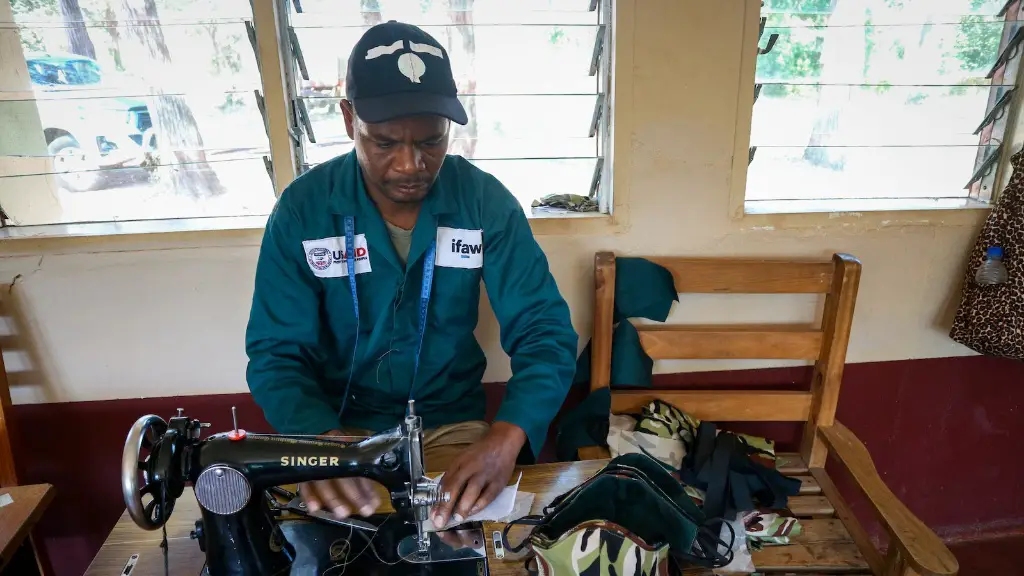Identifying Your Sewing Machine
Sewing is an art that has been around for centuries, and like many an art form, it has gone through various stages and traversed many a technological development along the way. Consequently, before you can know how to service a sewing machine, you must first identify it. Depending on its make and model, the servicing requirements may differ. If you are unsure of your machine’s brand or make and model, it is best to consult a professional or to visit the official website of the company and use their resources to determine the same.
Essential Parts Of The Machine
A typical household sewing machine generally consists of a number of essential parts, the most prominent of which are the needle, the presser foot, the thread guide, the bobbin case and the motor. Each of these parts needs to be serviced regularly. The needle, for example, needs to be changed often as it wears down with use. The presser foot needs to be switched from time to time in order to ensure that the fabric is properly fed, and the thread guide needs to be lubricated so that the threads move smoothly and with ease.
Checking The Bobbin Case
The bobbin case is perhaps one of the most important components, since it is responsible for the movement of the looping thread in the machine. It should be checked regularly to make sure that it is functioning properly. Furthermore, the pressure foot should also be examined to make sure that there is no blockage, and that it has been positioned correctly. The same should be done with the motor, since it is responsible for powering the whole machine.
Lubrication
Regular lubrication of the machine is essential. There are a variety of lubricants available in the market, and it is best to opt for something that is specifically designed for the make and model of your machine. In addition to this, all parts of the machine should be examined frequently for any signs of wear and tear, and replaced or serviced when required. It is also important to note that certain lubricants are only meant for specific machines, and it is best to consult the manufacturer for advice.
Cleaning And Servicing
Cleaning and servicing should be done regularly and frequently. This includes checking for any dirt or dust that may have accumulated in the machine, as well as testing each part to see that they function optimally. Additionally, the machine should also be checked for any signs of rust or corrosion. This is especially important since such issues can cause the parts of the machine to malfunction, rendering it unusable.
Using The Right Accessories
It is important to use only the right accessories for servicing the machine. This includes using the correct needles and the correct thread for the job. Using the wrong needle or thread can damage the machine, and thus it is important to consult with the manufacturer to make sure that the right accessories are being used. Furthermore, the right tension should also be applied when adjusting the parts of the machine.
Troubleshooting
In cases where the machine is malfunctioning, it is best to troubleshoot the issue before attempting to service it. Common issues such as jams or thread knots can easily be fixed by adjusting the tension and replacing the needle when required. In other cases, it may be wise to seek professional assistance in order to properly diagnose and repair the problem at hand.
Inspection Before Buying A Used Sewing Machine
In some cases, individuals may choose to buy a used sewing machine. This can be a great option, provided you carefully inspect the machine first. Check for any signs of damage or wear and tear, and ensure that all the parts are in good condition. It is essential to make sure that the machine is not faulty, and that it is safe and reliable to use.
Storing The Sewing Machine Properly
When the machine is not in use, it is important to store it properly. This includes making sure that the machine is kept in a cool, dust-free place. Additionally, the machine should also be covered to protect it from dust and other elements. Lastly, it is best to keep all the accessories of the machine in one place, since this will make it easier to use the machine once it is taken out of storage.
Replacing Parts Of The Sewing Machine
Replacing worn out or faulty parts of the sewing machine can be an expensive process. It is advisable to consult with the manufacturer prior to replacing any part, as it may be cheaper to simply repair the existing parts as opposed to replacing them. Furthermore, research should also be done to ensure that the correct parts are bought, as using the wrong replacements can cause permanent damage to the machine.
Safety Considerations
It is important to practice caution and safety when servicing a sewing machine. It is wise to avoid contact with any parts of the machine that may be moving, or that may be under pressure. Make sure to double check that the machine is turned off while servicing it and always unplug the machine from any power source when not in use.


